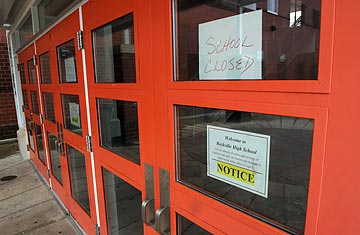
What mosquitoes are to malaria, school-age children are to the flu. Packed tightly in schools — and rarely all that hygienic — kids are influenza superspreaders. So, during the initial stages of the H1N1 outbreak in the U.S., when schools closed immediately in response to a new flu case, that policy made a lot of sense. It eased fears among parents who were fearful of exposing their children to a new virus, and prevented kids from passing the disease to each other in school — then bringing it back home.
On the CDC's early advice — to close schools with confirmed cases for up to two weeks — hundreds of schools in the U.S. have been temporarily shut down, including, for a time, the entire 80,000-student school system of Fort Worth, Texas. But as the virus has continued to spread without causing very serious sickness, some critics have begun to wonder if the chance of reducing a few new cases is worth keeping healthy children out of class. On May 4 Richard Besser, the acting director of the CDC, said that "closing schools is not effective" at halting the spread, and the agency rescinded its earlier advice.
Now the decision is left up to local authorities, but as Mayor Michael Bloomberg of New York City, where 30 schools have been closed due to H1N1, has said, "there's no answer. The bottom line is, case-by-case basis is probably the right thing."
Read "Schools Close as Spike in Swine Flu Cases Hits Japan."